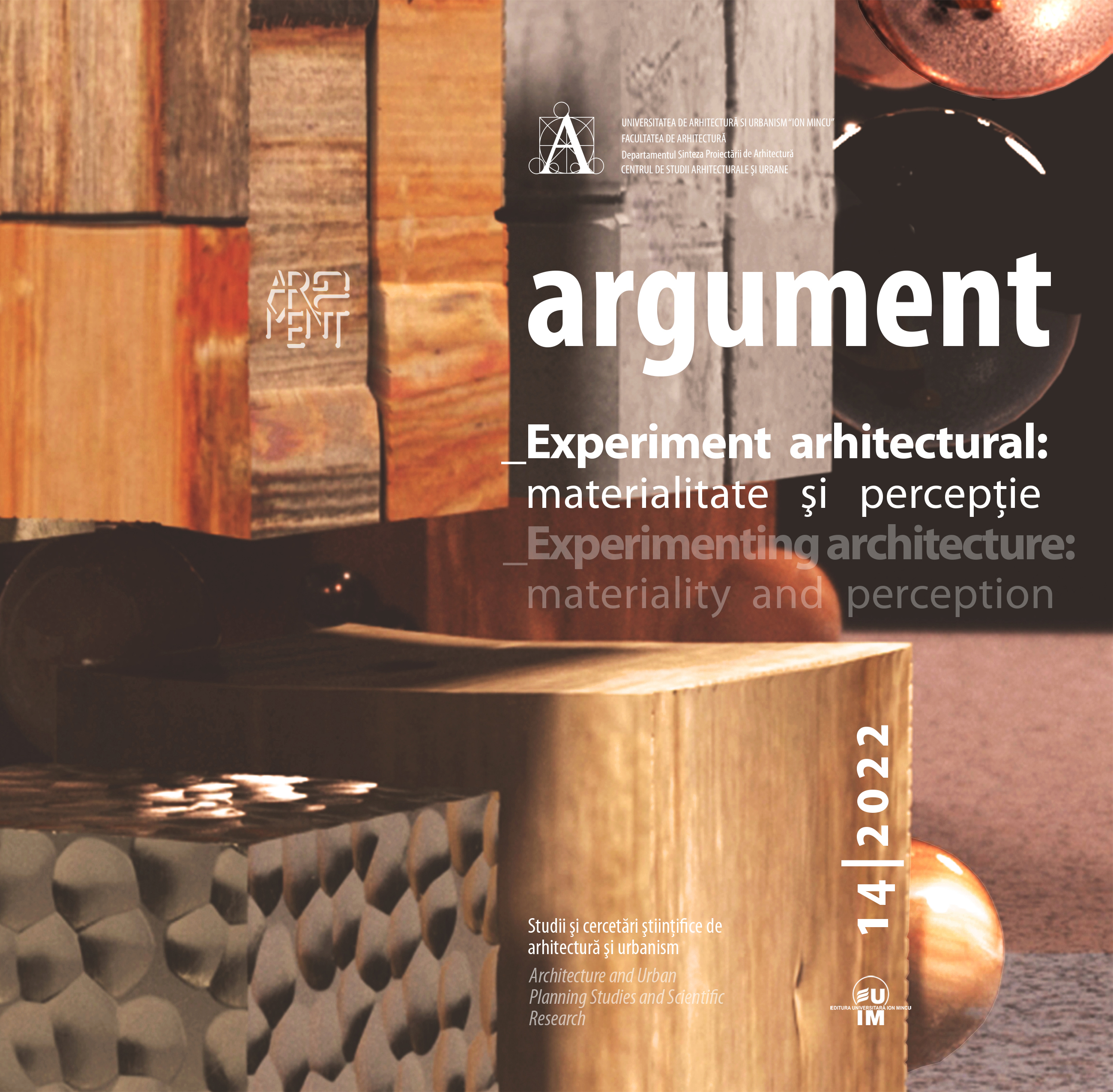Materiale translucide - Spațiu diafan. De la spațiul sacru la locuințele unifamiliale contemporane
Translucent Materials - Diaphanous Space. From Sacred Space to Contemporary Single-Family Dwellings
Author(s): Alexandra Maria PascotescuSubject(s): Architecture, Visual Arts
Published by: Editura Universitară “Ion Mincu”
Keywords: diaphanous space; translucent materials; contemporary architecture; heterotopia;
Summary/Abstract: Light is the visual agent that stimulates sight and helps things to be seen. Thus, undoubtedly, transparency has always played a significant role in architectural history. Furthermore, through the impressive Gothic cathedrals, history has taught us the importance of light in generating transformed spaces. For Foucault, sacred spaces can be defined as layered spaces or heterotopias (Foucault, 1984). In those cases, a new type of material comes to stand between physical light and the illuminated space, a material that is neither transparent nor opaque: semitransparent glass that lets light penetrate its surface and creates a particular atmosphere inside the edifice. Starting from the previous observations, this paper argues that semi-transparent materials are an infinite medium for architects to create atmospheric spaces that address the human psyche. Furthermore, the article focuses on investigating, from a theoretical point of view, the uses of translucent and diaphanous materials in contemporary architecture as the result of a timeless inner human need. Research on the diaphanous and its relationship with the human psyche has been carried out by Anca Vasiliu (2010) through her study Despre diafan (About the diaphanous), where the question of chora as a place where the intangible meets the tangible arises, or by Richardo Villa (2019), where transparency and translucency are associated with the relationship between communication and the knowledge of the human psyche. Moreover, from a theoretical point of view, discursive communication and interaction over time through transparency and translucency are questioned also by Herman Parret (2022). As a side note, the idea of the above-mentioned timeless human need finds its exemplification in a study about sacred spaces in individual homes and the transformation undergone by the homes of immigrants (Bertolani & Boccagni, 2022).Beginning from the study of a series of examples of contemporary architectural projects that utilise translucent materials and comparing them with the use of translucent materials in sacred spaces, the research aims to argue that, independently of the historical context, there is a permanent human desire to find, through light and diaphanous materials, a transcendental space, a heterotopia or another space.
Journal: Argument
- Issue Year: 14/2022
- Issue No: 14
- Page Range: 248 - 260
- Page Count: 13
- Language: English, Romanian

